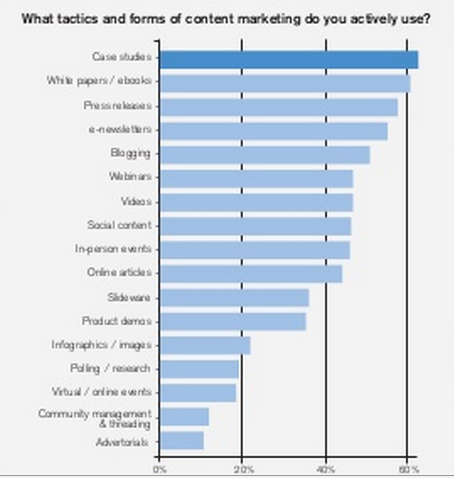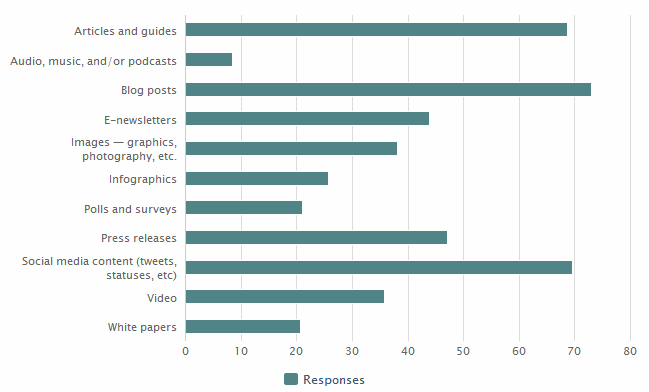A few years ago, marketers scrambled to make sense of search engine optimization (SEO). It was new and very few knew how it applied to their goals on the web. Slowly but surely the axiom “content is king” sprang up. Couple that with the social media phenomenon, and you have created an environment for an online marketing strategy to help businesses grow on the web. However, each element of an integrated marketing campaign depends on the content you share.
Content will always be king when it comes to web marketing. But, just as SEO and the internet as a whole have changed, the best ways to improve visibility for your site with content have transformed as well.
Diverse content has become as important as developing the content itself. A report from IDG Enterprise found that 84 percent of businesses plan to create more content in the next 12 months. As a result, finding the best ways to stand out from others is increasingly important.
Well now it’s time to talk about how to create a dynamic content marketing strategy. Developing a lot of content is good, as is producing high-quality content. Beyond that, though, finding the mix that ensures the right audiences respond to your site content will ultimately decide the success of your strategy.
What kinds of content do I need?
The definition of content has always been (maybe purposefully) vague. However, if we fast forward to present day, it’s not enough to just be publishing one type of content on your site. In fact, in the B2B space, creating up to 10 content formats is the norm. Think of your website as a buffet and the idea is to attract as many people as possible to keep them coming back. In order to do that, you have to create a variety of options if you want to appeal to different tastes and keep audiences hungry for more. The same goes for your website. Content has to be original, unique and, most importantly, diverse.
Think of your website as a buffet and the idea is to attract as many people as possible to keep them coming back. In order to do that, you have to create a variety of options to appeal to different tastes and keep audiences hungry for more.
What makes content diverse, and what will resonate with your audiences? We recently conducted an interview with Ken Barhoover, marketing manager for Park Place Technologies, a cloud services vendor, and he discussed how marketers must reach each persona they sell to when planning a content strategy.
“Creating content for each persona you’re likely to target or hear from is critical,” Barhoover said. “Agility to adjust your content or the way you produce it to focus on what’s working or what your prospects want and what isn’t working is a key factor of any successful web marketing campaign.”
There is no clearly defined combination that will work for a business. Like you’ve done since content became a part of your strategy, think about the forms of content that will appeal to your target audience. White papers are cited as key to building influence, while infographics (the fastest-rising content on the web) are great for promoting brand awareness.
Here’s a look at the content mix IDG found marketers are using:

Simiarly, an SEOmoz study shows marketers are using a wide array of content types to reach their audiences:

How do I make my content more diverse?
A successful content strategy should make the user feel like they are reading through an online magazine: There is a mixture of blog posts, interviews, white papers, videos and even infographics – just to name a few. If you struggle coming up with ideas of what to write, or how to present it in new ways, try to look through the eyes of your different target audiences.
- Think about the questions customers and social fans usually ask.
- Use your analytics to determine which pieces of content have consistently high rates of conversion.
- Monitor what ideal prospects are sharing across the web.
- Do competitive research to see what format are driving online success for similar businesses.
As strategies evolve, many businesses have started to outsource their content creation. The report from IDG found that 30 percent of marketers use a third-party vendor to manage some element of their strategy. Moreover, Brafton recently interviewed Peter Moeller, marketing director for B2B law firm for Scarinci Hollenbeck, who said outsourcing to a full-service content marketing agency with full-time, in-house editorial and creative talent helped his organization achieve its business goals with a smaller investment.
Diversity in content has quickly become a competitive necessity. Just as multiple people are involved in the decision to work with your business on the B2B side or you target a number of demographics on the B2C side, you need a strategy that includes content that garners a response from each member of your target audience.
But, I personally believe the reason many companies are looking outside for help with creating a successful content strategy isn’t just because they lack the people in house or it will save them some money. We actually have many clients who are among the leaders in their industries. Even for these organizations, common problems encountered include staleness, a lack of direction or content that just doesn’t appeal to their target audiences.
This is why more companies turn to agencies, such as Brafton, to expand content strategies, define their audience bases and, most importantly, produce content that their customers and prospects will find relevant, exciting and informative.
Diversity in content has quickly become a competitive necessity. Just as multiple people are involved in the decision to work with your business on the B2B side or you target a number of demographics on the B2C side, you need a strategy that you need a strategy that includes content that garners a response from each member of your target audience.
A report from SEOmoz found that most marketers believe informative articles have led to more leads and conversions than other kinds of content, such as white papers or video. However, that doesn’t mean you can exclude white papers or video marketing content from your strategy. It just highlights the value of different kinds of content for reaching the audiences you want and achieving your business goals.
Yes, content is king, but providing diverse content is the only way to make your strategy a true driver of site traffic, leads and conversions. Make your prospects come back to your site for more than just purchases. Give them something relevant to read. Teach them about your industry, and tell them you know what you’re talking about with different types of content that will appeal to them no matter their job title.

